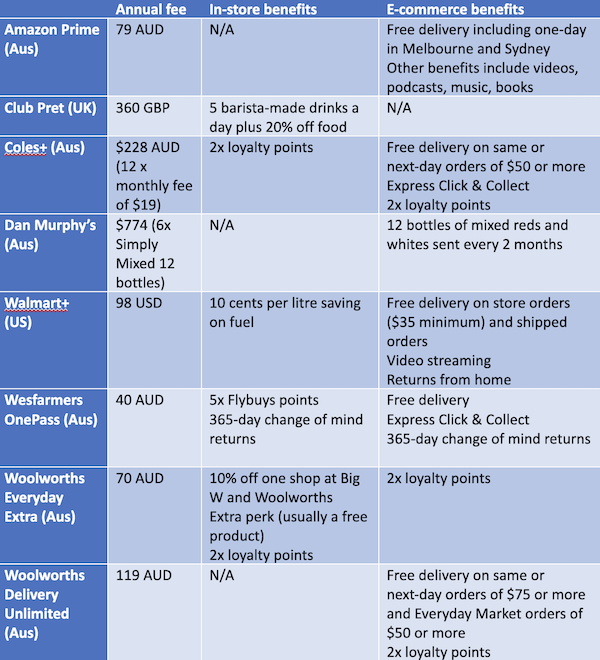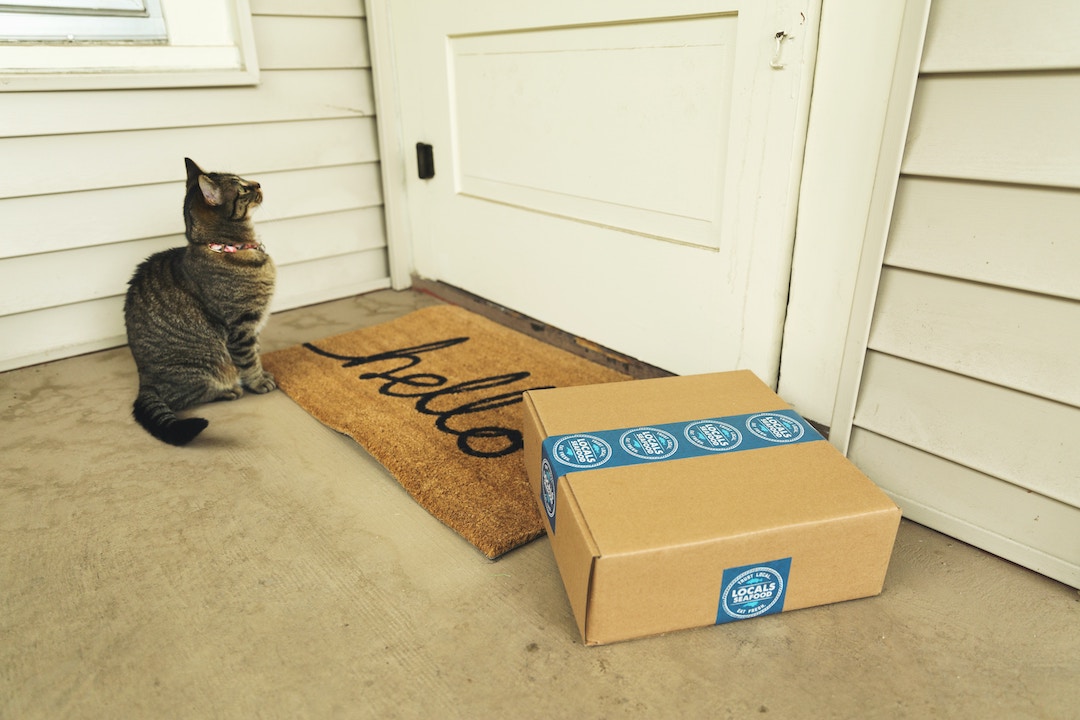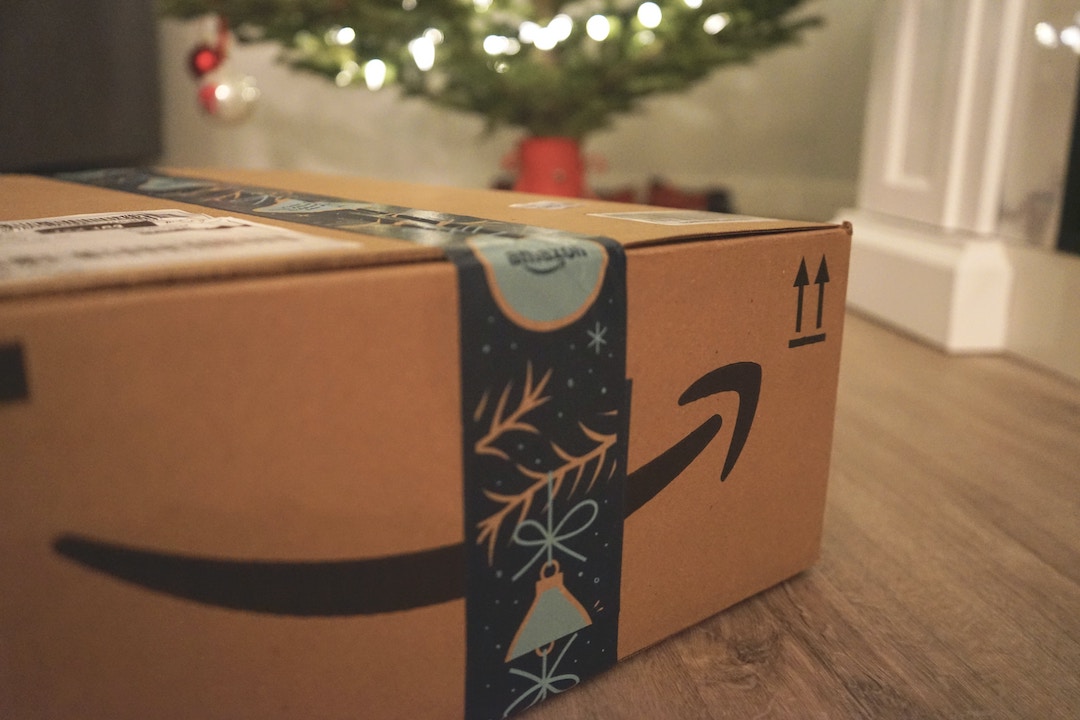In today’s ever-evolving retail landscape, subscription programs have emerged as a dynamic strategy for forward-thinking retailers.
However, recent changes in subscription offerings at retailers like Amazon, Pret a Manger, Wesfarmers, and Woolworths have highlighted the challenges retailers face when building subscription programs that not only appeal to consumers but also increase profitability.
In this article, I will explore key considerations for designing successful retail subscription programs and discuss potential future developments in this rapidly changing area.
The power of subscriptions in retail
Subscription models involve customers paying an upfront fee for recurring access to a product or service. While not a new concept, subscriptions have traditionally been applied to products or services with predictable usage cycles, such as gyms, mobile phones and newspapers. These arrangements often create a win-win situation, where customers receive value exceeding the subscription fee, and retailers secure a larger share of their spending.
Amazon Prime set a precedent by showcasing how a subscription model for free shipping could drive success across multiple retail categories. This prompted other retailers to follow suit, with some also focusing on free shipping, while others introduced entirely new propositions tailored to their markets. A leading innovator in physical retail has been Pret a Manger, the global sandwich chain, which has transformed its fortunes post-COVID with a coffee subscription offering up to five barista-made drinks a day.
The table below provides a summary of various subscription programs in Australia and other countries, categorising their benefits for both in-store and e-commerce customers.

Recent changes highlight two key challenges
Recent changes to the customer proposition at several subscription programs highlight two significant challenges in program design:
1. Handling Unprofitable Customers:
Subscription programs can inadvertently encourage unprofitable customer behaviour. For instance, consider a family with a $250 weekly grocery budget that spends all of it with one retailer, splitting their expenses between a $200 bulk e-commerce order with a $10 delivery fee and a $40 in-store top-up shop. If this family switches to a $20 per month delivery subscription and increases their e-commerce deliveries to two $120 orders a week, it results in lower profitability:
● Product sales remain unchanged at $240 per week.
● Delivery fee income decreases by approximately $20 per month.
● Costs increase due to the extra home delivery and additional online pick-and-pack costs.
This unintentional negative impact highlights the necessity for retailers to carefully assess the net impact on profitability when introducing subscription options.

Subscriptions may not be the best option for all individals
2. The Subscriptions Omnichallenge:
Omnichannel retailers face the complex task of creating subscription programs that cater to both in-store and e-commerce shoppers. Striking the right balance in a single program can be challenging, as most customers tend to favour one channel over the other. Also, because technology constraints make it simpler to deliver personalised entitlements to online customers, most retailers prioritise online subscriptions despite having significant in-store sales. The programs at Coles, Dan Murphy’s and Walmart all heavily favour online shoppers even though the vast majority of their sales are in-store.
In Australia, Wesfarmers and Woolworths have adopted distinct strategies to address the omnichannel opportunity. Wesfarmers initially launched its OnePass subscription with a focus on free delivery, but recently it has taken bold steps to attract more in-store shoppers, offering incentives like 5x Flybuys points for in-store purchases. The pivotal question here is whether this will be enough to significantly increase adoption among customers who prefer shopping in stores, particularly at Bunnings and Kmart which have lower e-commerce penetration. Otherwise, Wesfarmers may need to consider additional in-store benefits, such as member pricing or personalised offers, to develop OnePass into a mass-market proposition.
Conversely, Woolworths has shifted its Everyday Extra subscription to focus almost entirely on in-store customers. The 10% discount off one shop benefit is no longer available on e-commerce shops. The “Extra Perk”, typically a free product, has to be redeemed at a store. Woolworths is now targeting online shoppers through the separate Delivery Unlimited program. This shift suggests that Woolworths is now deliberately segmenting its offerings to shoppers in different channels. Woolworths also noted in its FY23 results announcement that it has more to do “to scale Everyday Extra as a key value mechanic for all families, especially Savers” which suggests the subscription design is still being reviewed and there may be more changes to come.
Both Wesfarmers and Woolworths are now at the forefront of global retail subscription innovation and it will be fascinating to observe how consumers respond to Woolworths’ differentiated approach in comparison to Wesfarmers’ all-encompassing OnePass strategy.

The Future of retail subscriptions
As subscriptions continue to gain traction among omnichannel retailers, innovation and evolution are on the horizon. I expect collaboration between retailers and brands will become more prevalent, incentivising consumers to commit over multiple shops to specific brands within high-spend categories like beauty, pet care and parenting. Eagle Eye company Untie Nots is helping retailers with this opportunity through personalised and gamified “challenge” offers which encourage loyalty to specific brands and retailers.
Personalisation and segmentation will likely also play an increasing role as retailers cater subscription models to the unique needs of individual customers. I expect this will start with a greater variety of subscriptions to cater for groups interested in specific categories and will then evolve over time with increasingly personalised subscriptions, just as we are seeing loyalty programs become increasingly personalised.
The world of retail subscriptions is evolving rapidly. Successful subscription programs will need to strike a delicate balance between customer value and retailer profitability. It’s definitely an exciting space to watch for future developments and innovations.

Jonathan Reeve, Vice President of the Asia Pacific region at Eagle Eye
About the author
Jonathan Reeve is Vice President of APAC, Eagle Eye. With nearly three decades of experience, Jonathan is a seasoned expert in the retail industry, collaborating with retailers worldwide to ensure they remain at the forefront of digital innovation. After successfully operating his own consulting business for five years and authoring the influential book, “Retail’s Last Mile: Why Online Shopping Will Exceed Our Wildest Predictions”, Jonathan is now the Vice President for the Asia Pacific region at Eagle Eye, a SaaS technology company transforming marketing through real-time personalised performance marketing. In this role, he helps APAC businesses develop and implement world-leading digital marketing programs that drive customer acquisition, interaction and retention.
Eagle Eye is a leading SaaS technology company enabling retail, travel and hospitality brands to earn the loyalty of their end customers by powering their real-time, omnichannel and personalised consumer marketing activities.
Eagle Eye AIR is a cloud-based platform that provides the most flexible and scalable loyalty and promotions capability in the world. More than 750 million personalised offers are executed via the platform every week, and it currently hosts over 100 million individual loyalty members for businesses worldwide. We are trusted to deliver a secure service at hundreds of thousands of physical POS destinations worldwide, enabling the real-time issuance and redemption of promotional coupons, loyalty offers, gift cards, subscription benefits and more.
The Eagle Eye AIR platform is currently powering loyalty and customer engagement solutions for enterprise businesses all over the world, including Asda, Tesco, Morrisons, Waitrose and John Lewis & Partners, JD Sports, Pret a Manger, Loblaws, Southeastern Grocers, Giant Eagle and the Woolworths Group.
In January 2023, the Group acquired France-based Untie Nots, an AI-powered personalised promotions business, adding Carrefour, E. Leclerc, Auchan and other leading brands to its European customer base.
To read more about the use of technology in the retail industry, click here.

